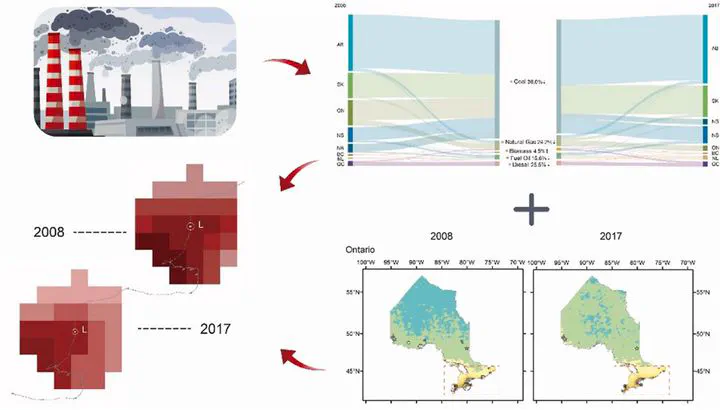Assessment of reductions in NO2 emissions from thermal power plants in Canada based on the analysis of policy, inventory, and satellite data

Abstract
The National Pollutant Release Inventory (NPRI) was enacted in Canada as an information management tool under federal administration to assist in identifying the amount of point pollution sources. This study demonstrates an approach to combining on-ground air pollutant emission inventory (i.e., NPRI) with satellite monitoring data to verify the impact on overall air pollution of implementing policies to reduce emissions from power plants. As demonstrated by the satellite observations, the decreasing column density in satellite NO2 hot spots was obvious in some Canadian provinces, especially in Ontario, where total on-site NO2 releases from all types of power plants decreased by 98.4% and the total value of TVCDs of NO2 in the corresponding area saw a 70.5% decrease over the period of study (i.e., 2008 to 2017). With the advances brought by these direct and indirect demand-pull policies, coal-fired plants are being rapidly phased out in Canada, and this trend is projected to become more pronounced in future years. This study provides insights into developing a verification method that uses digital and visual methods to characterize the changes in emissions concentration in the area surrounding an emission source as a result of emission reduction policies and incentives. Combining numerical data from an inventory tool with pollutant concentration thresholds at the geographical level can be helpful for monitoring emission reduction performance.
Type
Publication
Journal of Cleaner Production